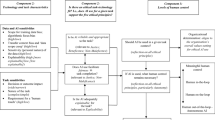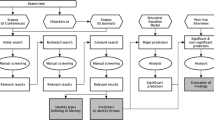Abstract
This paper introduces a model for Distributed Employee Timetabling Problems (DisETPs) and proposes a general architecture for solving DisETPs by using a Multi Agent System (MAS) paradigm. The architecture is composed of a set of autonomous software Scheduling Agents (SAs) that solve the Employee Timetabling Problems (ETP) for each department. Each agent has its own local ETP problem and its own goals. The Scheduling Agents must coordinate their local solution with the other agents in order to achieve a global solution for the whole organization that yields a better result with respect to the organization’s global targets. To achieve a coherent and consistent global solution, the SAs make use of a sophisticated negotiation protocol among scheduling agents that always ends in an agreement (not ensured to be optimal). The main functionalities of this protocol are agent to agent relation definition, a mechanism to approve a chain of Request for Changes and an electronic marketplace for bidding on preferred common time slots.
Experimental analysis of the implemented Multi Agent System for the Soroka medical center is presented. The results of our study indicate that the proposed framework has the potential to reduce the cost of transportation for the nurses that traveling to and from the hospital.
Similar content being viewed by others

References
Bellicha, A. (1993). Maintenance of solution in a dynamic constraint satisfaction problem. In Proc. of applications of artificial intelligence in engineering VIII, Toulouse (pp. 261–274).
Bessière, C. (1991). Arc-consistency in dynamic constraint satisfaction problems. In Proceedings of the ninth national conference on artificial intelligence, Anaheim, CA (pp. 221–226).
Bessière, C. (1992). Arc-consistency for non-binary dynamic csps. In Proceedings of the 10th European conference on artificial intelligence, Vienna (pp. 23–27)
Bessière, C., Maestre, A., & Messeguer, P. (2001). Distributed dynamic backtracking. In Workshop on distributed constraint of IJCAI01.
Burke, E., De Causmaecker, P., & Vanden Berghe, G. (1998). A hybrid tabu search algorithm for the nurse rostering problem. In SEAL ’98, Canberra, Australia (pp. 187–194).
Burke, E., Cowling, P., De Causmaecker, P., & Vanden Berghe, G. (2001). A memetic approach to the nurse rostering problem. International Journal of Applied Intelligence, 15(3), 199–214.
Burke, E., De Causmaecker, P., Vanden Berghe, G., & Van Landeghem, H. (2004). The state of the art of nurse rostering. Journal of Scheduling, 6, 1–14.
Caseau, Y., Giullo, P., & Levenez, E. (1993). A deductive and object-oriented approach to a complex scheduling problem. In Lecture notes in computer science: Vol. 760. Deductive and object oriented databases, Phoenix, AZ (pp. 67–80).
De Causmaecker, P., & Vanden Berghe, G. (2002). Relaxation of coverage constraints in hospital personnel rostering. In Proceedings of the 4th international conference on the practice and theory of automated timetabling PATAT’02, Ghent, Belgium (pp. 129–147).
Dechter, R. (2003). Constraints proccessing. New York: Morgan Kaufman.
Dechter, R., & Dechter, A. (1988). Belief maintenance in dynamic constraint networks. In Proceedings of the seventh annual conference of the American association of artificial intelligence (pp. 37–42).
Faltings, B., & Macho-Gonzalez, S. (2002). Open constraint satisfaction. In P. V. Hentenryck (Ed.), Lecture notes in computer science: Vol. 2470. Proceedings of principles and practice of constraint programming CP 2002, Ithaca, NY, USA (pp. 356–370).
Glover, F., & Laguna, M. (1997). Tabu search. Dordrecht: Kluwer Academic.
Gomes, C., Selman, B., & Kautz, H. (July 1998). Boosting combinatorial search through randomization. Proceedings of AAAI-98, Madison, WI, July 1998 (pp. 281–331).
Grobner, M., & Wilke, P. (2001). Optimizing employee schedules by a hybrid genetic algorithm. In Proceedings of the evo workshops (pp. 463–472). Berlin: Springer.
Hamadi, Y., & Bessière, C. (1998, August). Bakctracking in distributed constraint networks. In Proc. ECAI-98, Brighton (pp. 219–223).
Kragelund, L. (1997). Solving a timetabling problem using hybrid genetic algorithms. Software: Practice and Experience, 27, 1121–1134.
Kragelund, L., & Kabel, T. (1998). Employee timetabling. M.Sc. Thesis, IR-129.
Lamma, E., Mello, P., Milano, M., Cucchiara, R., Gavanelli, M., & Piccardi, M. (1999). Constraint propagation and value acquisition: why we should do it interactively. In T. Dean (Ed.), Proc. of intern. joined conference of artificial intelligence JCAI 99 (pp. 468–477). Stockholm: Morgan Kaufmann.
Mailler, R., & Lesser, V. (2004). Solving distributed constraint optimization problems using cooperative mediation. In Proceedings of third international joint conference on autonomous agents and multiagent systems (AAMAS 2004) (pp. 438–445). IEEE Computer Society.
Meisels, A., & Kaplansky, E. (2004). Iterative restart technique for solving timetabling problems. European Journal of Operational 153, 41–50
Meisels, A., & Kaplansky, E. (2002). Scheduling agents—distributed employee timetabling (detp). In Proceedings of the 4th international conference on the practice and theory of automated timetabling PATAT’02, Ghent, Belgium, July 2002 (pp. 166–180).
Meisels, A., & Lusternik, N. (1997, August). Experiments on networks of employee timetabling problems. In Lecture notes in computer science: Vol. 1408. Pract. theo. autom. timetab. II, Toronto, Canada (pp. 130–141).
Meisels, A., & Schaerf, A. (2003). Modelling and solving employee timetabling problems. Annals of Mathematics and Artificial Intelligence, 39, 41–59.
Meseguer, P., & Jimenez, M. A. (2000). Distributed forward checking. In Proc. CP-2000 workshop on distributed constraint satisfaction, Singapore, 22 September 2000.
Nguyen, T., & Deville, Y. (1998). A distributed arc-consistency algorithm. Science of Computer Programming, 30, 227–250.
Petrovic, S., Beddoe, G., & Vanden Berghe, G. (2002). Storing and adapting repair experiences in employee rostering. In Proceedings of the 4th international conference on the practice and theory of automated timetabling PATAT’02, Ghent, Belgium (pp. 148–165).
Prosser, P. (1993). Hybrid algorithms for the constraint satisfaction problem. Computational Intelligence, 9, 268–299.
Prosser, P. (1994). Binary constraint satisfaction problems: some are harder than others. In Proceedings of the 11th European conference on artificial intelligence, Amsterdam (pp. 95–99).
Schaerf, A., & Meisels, A. (1999). Solving employee timetabling problems by generalized local search. In Proc. Italian AI ass. (pp. 493–502).
Silaghi, M. C., Stefan, S., Sam-Haroud, D., & Faltings, B. (2001). Asynchronous search for numeric DiSCSPS. In CP2001, Paphos, Cyprus.
Solotorevsky, G., & Gudes, E. (1996). Solving a real-life nurses timetabling and transportation problem using distributed csp techniques. In Proceedings of the second international conference on principles and practice of constraint programming (CP96), Cambridge, MA, USA.
Solotorevsky, G., Gudes, E., & Meisels, A. (1996). Modeling and solving distributed constraint satisfaction problems (dcsps). In Constraint processing-96, New Hamphshire.
Solotorevsky, G., Shimony, E., & Meisels, A. (1998). Csps with counters: a likelihood based heuristic. Journal of Experimental & Theoretical Artificial Intelligence, 10, 117–129.
Tsang, E. (1993). Foundations of constraint satisfaction. New York: Academic.
Verfaillie, G., & Schiex, T. (1994a). Dynamic backtracking for dynamic constraint satisfaction problems. In Proceedings of the European conference on artificial intelligence workshop on “constraint satisfaction issues raised by practical applications”.
Verfaillie, G., & Schiex, T. (1994b). Solution reuse in dynamic constraint satisfaction problems. In Proceedings of the twelfth conference of the American association of artificial intelligence (pp. 307–312).
Yokoo, M. (2001). Distributed constraint satisfaction: foundations of cooperation in multi-agent systems. Berlin: Springer.
Yokoo, M., Durfee, E. H., Ishida, T., & Kuwabara, K. (1998). Distributed constraint satisfaction problem: formalization and algorithms. IEEE Transactions on Knowledge and Data Engineering, 10, 673–685.
Author information
Authors and Affiliations
Corresponding author
Rights and permissions
About this article
Cite this article
Kaplansky, E., Meisels, A. Distributed personnel scheduling—negotiation among scheduling agents. Ann Oper Res 155, 227–255 (2007). https://doi.org/10.1007/s10479-007-0206-0
Published:
Issue Date:
DOI: https://doi.org/10.1007/s10479-007-0206-0



